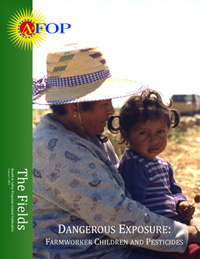13
May
Studies Show Health and Financial Benefits of Organic Poultry Farming
(Beyond Pesticides, May 13, 2011) Two recent studies performed independently of each other confirm that organically produced food is safer and can actually save money in the long term. A report from the University of Florida has found that salmonella is the leading disease-causing pathogen found in food, leading to more than $3 billion every year in public health costs. Salmonella is a microbe that is often found in poultry and egg products. An unrelated study, published in November of last year by the University of Georgia, found that there is a significantly lower rate of salmonella contamination in organic chickens compared to conventional chickens. Taken together, the results of these two studies reveal the potential for organic poultry farming to significantly reduce the risk to human health from food pathogens, as well as the cost to society of treating and eliminating those pathogens.
In April of this year, the Emerging Pathogens Institute at the University of Florida released a report entitled “Ranking the Risks: The 10 Pathogen-Food Combinations with the Greatest Burden on Public Health.” The aim of the report was to evaluate the burden to society, in terms of health risks as well as financial cost, caused by specific disease-causing microbes found in food. Among the report’s findings, the greatest cost burden is placed on society due to contamination of food with salmonella. Compiling data from the costs of doctor’s visits, hospitalization, prescriptions, lost wages, and estimated economic value of a premature death, the researchers found that total salmonella contamination resulted in a financial burden to society of $3.3 billion.
The study measured risks to human health and impacts on people’s lives using a method called “quality adjusted life years” (QALY), which is a standard public health tool used to assess such seemingly unquantifiable concepts as pain, suffering, and disability. The cumulative total of salmonella’s QALYs, including from produce and other foods, was also higher than any other microbial pathogen. It resulted in over 1 million illnesses, 19,336 hospitalizations, and 378 deaths in 2009. For salmonella specifically in poultry, the cost was $712 million, resulting in 221,000 illnesses, 4,000 hospitalizations, and 81 deaths.
In November, the University of Georgia’s Center for Food Safety released a study that documents the comparative rates of salmonella contamination in both feces and feed at organic and conventional broiler poultry farms in North Carolina. There were three organic and four conventional farms included in the study, all owned by the same company. The researchers found that, in examining fecal samples, 38.8% of those from conventional farms contained salmonella, compared with only 5.6% from organic farms. For feed, the results were similar: 27.5% of feed on the conventional farms had salmonella, while only 5% of organic feed was contaminated.
The study also examined the prevalence of salmonella that are resistant to antibiotic treatment and compared the results of organic versus conventional. Alarmingly, the results show that resistance to the antibiotic streptomycin is 36.2% at conventional farms, compared to 25% at organic. Perhaps even more significant, multidrug resistance to six different antibiotic treatments (ampicillin, streptomycin, amoxicillin, cephalothin, ceftiofor, and cefoxitin) is at 39.7% on the conventional farms, whereas none of the organic birds show resistance to this combined treatment.
Antibiotic and antimicrobial resistance is a serious public health issue, since it can lead to infections that are difficult or impossible to treat. When they are used in small doses, such as in livestock feed or antimicrobial hand soaps containing triclosan, the drugs kill a small amount of the microbial population, but the ones that survive evolve immunity to the treatment and pass this on to future generations. These resistant populations can then grow and eventually come in contact with humans, putting the general public at risk of untreatable infection.
It is clear from the results of these studies that there is significant public health benefit, in terms of both quality of life as well as financial burden, in raising livestock in an organic system rather than a conventional system. Both society and the individual benefit from reduced rates of illness and reduced pressure on the health care system.
To learn more about the benefits of organic agriculture, see Beyond Pesticide’s organic program page.
Sources: Washington Post, Grist















